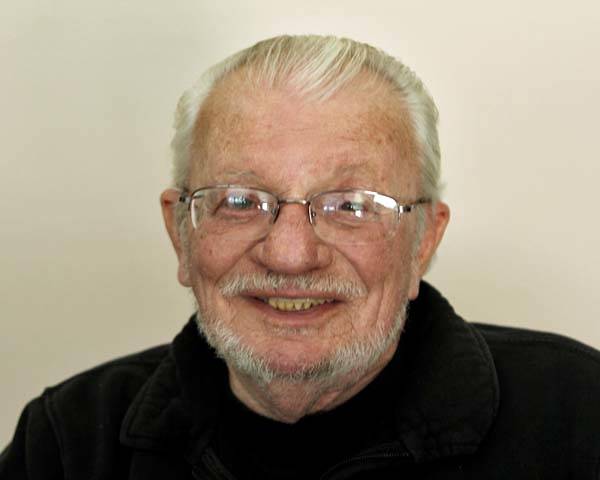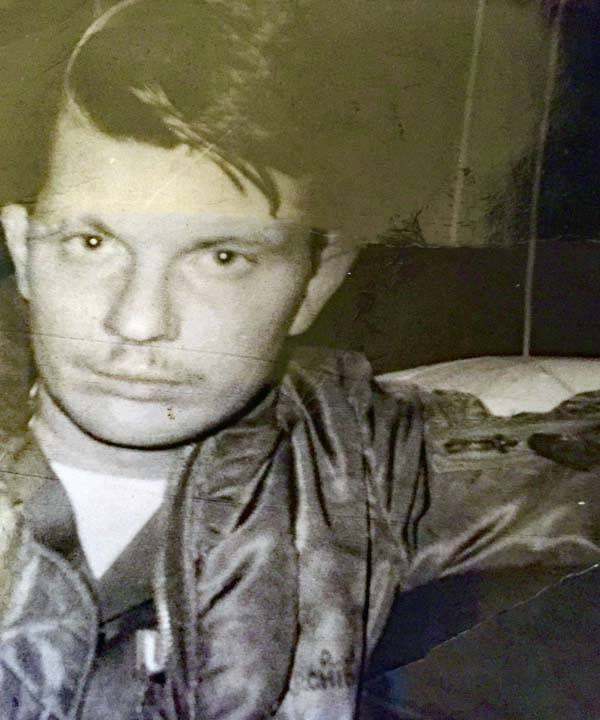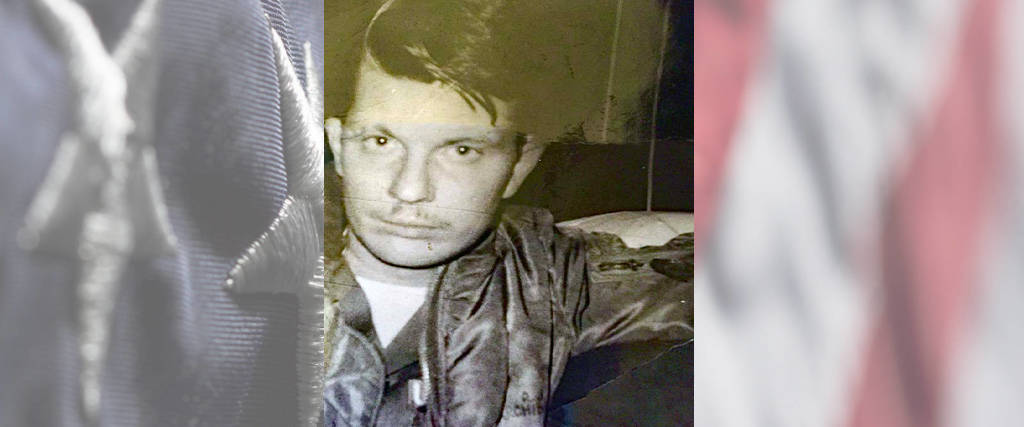U.S. Air Force Vietnam Wilmette, IL Flight date: June, 2019
By David Adams, Honor Flight Chicago Veteran Interviews Volunteer

Robert (“Arch”) Archibald was born in Chicago on June 8, 1943, grew up in Norwood Park, and graduated from Taft High School with the class of 1960. As a teenager Arch built racing cars. He is an accomplished engine mechanic. He and his buddies took their “hot rods” to the quarter-mile drag strips in the Chicagoland area, including those at Union Grove and Oswego. He admits that from time-to-time they found a quarter-mile-long stretch on city streets where they may have raced. Right! After graduation he worked in auto dealerships awaiting his draft notice. Being an expert mechanic paid dividends when he entered the service in 1962.
Instead of opting for induction into the Army as a draftee, he went to the Chicago Air Force recruiting office, and volunteered for a four-year enlistment as an engine mechanic. His eight-week Basic Training at Lackland AFB, San Antonio, Texas, was followed by 12 weeks of training on reciprocating airplane engines at Sheppard AFB, Wichita Falls, Texas. Being fully qualified as an engine mechanic, his next assignment was to Hunter AFB, Savannah, Georgia. The base was home to the Military Air Transport Service (MATS) and the Eastern Transport Air Force 63rd Troop Carrier Wing, Heavy. Arch recalls that the 63rd flew the C-124 Globemaster intercontinental cargo aircraft. At Hunter he worked on the airplane’s engines and was on one of several “launch teams” responsible during a 24-hour duty period for aircraft maintenance and dispatch of the airplane. The C-124, or “Old Shaky” as Arch knew it, transported supplies and troops worldwide.
He especially remembers a six to seven month TDY to the Pacific in 1964-65 with his airplane. Arch flew into and out of Guam, Formosa, and the Philippines delivering cargo. In Formosa he says that almost daily the Chinese shelled the beaches from the mainland “just to let us know they were there and could.” It was the Cold War personified. He first saw Bien Hoa Air Base, South Vietnam, during this assignment, although he recalls that no one received “credit” for Vietnam service for their presence and activities there. He went back to Hunter in Georgia for about six weeks in the summer of 1965 when he received orders to return to Vietnam.

Arch arrived at Bien Hoa in late September, 1965. While there, he worked on the AC-47 “Spooky” or “Puff the Magic Dragon” gunships. He recalls that it seemed that every opening on the airplane had guns pointed out. After five to six weeks at Bien Hoa, he moved to Pleiku Air Base, located in the Central Highlands where he joined the 1st Air Commando Squadron. Pleiku is about 100 miles west of the South China Sea coast and about 40 miles from the Cambodian border. He recalls that the 1st ACS was one of the initial United States Air Force advisory units in South Vietnam; its aircrews used the A-1E Skyraider to fly interdiction along the Ho Chi Minh trail. Squadron history informs that its pilots and planes also flew cover for pilot rescue missions, and continued to fly close air support missions for American and South Vietnamese ground forces. The 1st ACS also trained USAF and South Vietnamese Air Force aircrews in the United States and South Vietnam in unconventional warfare, counterinsurgency, psychological warfare, and civic actions.
Arch was one of six Air Force mechanics on base who made up two teams of three for maintaining and repairing the A-1Es. He remembers going into the field to the site of shootdowns in order to strip the engine, and salvage useable parts, from the airplane wreckage. Frequently he flew in Army helicopters and once or twice in the “backseat” of an A-1E into such landing strips as Khe Sanh. He qualified in the M16 and Colt revolver and carried a Beretta ankle gun for additional safety.
In addition to Air Force personnel, Pleiku was home to the Army, its Green Berets, and the Marines. They were alerted of approaching NVA or Viet Cong forces by the Montagnard, “people of the mountain,” tribesman who lived in the hills. These warriors were armed only with bow and arrows as Arch remembers. Regarding the South Vietnamese, he asserts that “the people at Pleiku really wanted us” to be there.
All servicemen at Pleiku lived in tents, close to sandbagged bunkers. More often than Arch liked, incoming mortar rounds caused him and others to run to their bunkers for safety. He and his tentmates adopted a small monkey who they named “Chester the pester.” Chester liked his human digs and in exchange would set off his own squawking, squealing alarm whenever anyone came near the tent. K-rations were on mess hall menu day-in and day-out. He seldom ventured into the village of Pleiku which he remembers as congested. He ate solely on base.
Perched up in the Central Highlands, Pleiku was susceptible to attack by the enemy. Before his time there, the Viet Cong had overrun the air base (in February 1965) killing nine American service men, wounding 128 others, and damaging or destroying 24 aircraft. Arch recalls also that in early 1966, another Viet Cong attack blew up the ammo dump. He also remembers the day they returned to attack the base. With rifle rounds going through the tents, he and others grabbed their weapons and returned fire. This enemy engagement was short-lived when the enemy retired from the fight. Arch took a well-earned R&R to Tokyo mid-tour. Arch, along with two Marines and two Army troops stayed five days in a very fine hotel. Lucky for them, they met the President of Canadian Airlines who was also a hotel guest. He treated them to drinks, meals and provided insight into things to see and do.
Arch completed his tour in August, 1966, returning home and receiving his discharge as an E-4 at Travis AFB, California on August 3, having served four years. He received no heart-warming welcome from American citizens as he traveled back to Chicago from San Francisco. He attended the University of Illinois, UIC, and graduated from Roosevelt University with a degree in architecture and design. He worked in this field until about 1977 when he changed career paths to auto sales, an occupation in which he still works. Arch and Julie have been married 46 years, have three children, a daughter and two boys, as well as three grandsons.
While he has many positive memories of 10 months in Vietnam, he says, “what made it bad was the way we were treated coming back.” Arch, your Honor Flight cannot erase the bitter memories of your return to the States in August, 1966, but it will be an opportunity to share the day with other courageous vets from the Vietnam War, Korea and WWII and to be honored in a very special way.



